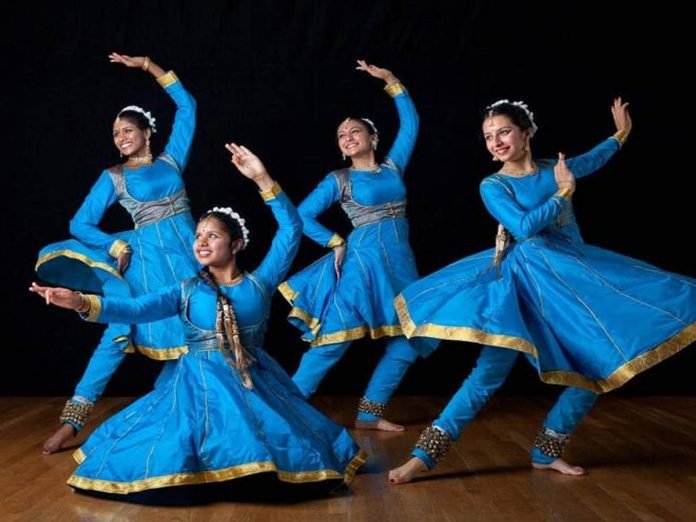Last Updated on March 4, 2024 by Nasir Hanif
India is a land of art. It can be ideally regarded as a melting pot of cultures. Dance has undoubtedly been one of the most crucial forms of performing arts. The history of Indian dance forms is rich and diverse, just like the Indian cultural heritage. Indian classical dances shine in India’s memento of cultural elegance with great glory. Dance is a beautiful manifestation of creativity and imagination. The treasure box of classical dances of India is enormous. Let us dive deep and discover some of the most interesting facts about the classical dances of India.
Table of Contents
Origin
Dance as an art form has been prevalent in many Asian countries since time immemorial. However, the grandeur and beauty of the Indian classical dance were first well-documented in the Sanskrit text named ‘Natya Shastra.’ It was written between 200 BCE and 200 CE. This is a pristine book describing in detail everything about Indian Classical Dance. In ancient times, the main aim of dance was to worship gods and goddesses. For a long time, dance performances were only restricted to Indian temples to offer prayers to the deities and perform in front of them to celebrate them. Later it moved to the royal courts. It was much later that classical dances of India attained a form of entertainment.
Rasanubhuti – The 8 Rasas of Indian Classical Dance
The ultimate aim of classical dances of India is to speak about the eight ‘Anubhutis’ or emotions of a human being. Any Indian dance form is mainly based on expressing these emotions through the performing arts. The eight anubhutis or emotions depicted in classical dances of India are:
- Shringar – Emotion of love
- Hasya – Emotions of humor
- Karuna – Emption of sorrow
- Raudra – Emotion of anger
- Veer – Emption of heroism
- Bhayanak – Emotion of fear
- Bibhats- Emotion of disgust
- Adbhoot- Emotion of wonder
Later, a 9th Rasa was added to the list named ‘Shanta’ or Peace. The use of various hand gestures called ‘Mudras’ also aids in expressing these ‘Anubhutis’ in a better or rather expensive way accentuating their effects. Facial expressions are also integral to Rasanubhuti’s manifestation and are a component of almost every type of Indian classical dance.
Difference Between Folk Dance and Classical Dances of India:
Many people are unaware that folk dances in India and classical dances of India are two completely unique and individual genres with not too many similarities. The folk dances were practiced mostly by the indigenous or native tribes inhabiting India for a long time. These dances prevailed regionally and were restricted only to the tribes where they originated. For example, the ‘Bihu’ dance form hails from the Northeast state of Assam. These folk dances chiefly tend to highlight the celebration of events that are primarily unique to a certain community.
classical dances of India, on the other hand, are all about the technicalities and intricacies involving many complex rules and regulations. The body movements and gestures of the Indian classical dance forms are much more complex than the folk dances. The best books describing the technicalities of classical dances of India are ‘Abhinaya Darpan,’ written by Acharya Nandikeshawara, and Nartanadhyaya. However, ‘Natya Shastra’ by Bharata remains the foundation stone of Indian classical dance forms.
The Different Indian Classical Dance Forms
Presently, the Indian Ministry of Culture recognizes nine different dance forms as India’s official classical dance forms. These include:
Bharatnatyam:
Having originated in the Tanjore region of South India, it was a prevalent dance form in ancient India that aimed to worship the gods and goddesses. It is around 2000 years old and encompasses ‘Ras,’ ‘Taal,’ ‘Bhav,’ and ‘Rag.’ The ‘devadasis’ traditionally performed it.
Kathak:
It has a north Indian origin. It was traditionally practiced by the ‘Kathaks,’ who are artists telling stories enhanced with graceful gestures to attract listeners. The Kathak dance form principally conveys various stories from the Indian epics of Ramayana and Mahabharata. The dancers dress up elaborately, and the main art is beautiful synchronization with the beats.
Odissi:
It is the native dance form of Orissa. Odissi dance was performed in the Puri Jagannatha temple to offer prayers to the lord. It is a dance form combining ‘Lasya’ and ‘Tandava.’ The movements have a beautiful manifestation of sea waves resembling the geographical characteristics of the region of its origin.
Kuchipudi:
It is a dance executed in the drama style that originated in the Krishna district of Andhra Pradesh.
Kathakali:
One of the most celebrated and toughest Indian classical dance forms is Kathakali. It is a dance drama that primarily depicts tales from the life of Lord Krishna. Steeped in mythological themes, this dance form originated in South India.
Mohiniattam:
Characterizing the feminine aspect that is ‘Lasya ‘, this dance form is inspired by the mythological ‘Mohini’ avatar of Lord Vishnu. It is one of the most pristine and gorgeous dance forms in India.
Manipuri:
As the name suggests, this famed dance form originated in the Manipur state of India. The fulcrum of this dance form lies in the famous ‘Ras Leela’ tales that took place amongst Krishna, Radha, and their sakhis. It is based on the love story of Radha and Krishna.
Sattriya:
It is a crucial element of the Vaishnava culture in India. An Assamese dance form by origin, it celebrates Lord Krishna and an indefatigable faith in him through beautiful plays and dance drama. It also involves extensive use of music.
Chhau dance:
Originating from the Purulia district of West Bengal and the forest areas of Jharkhand and Mayurbhanj, this is another incredible dance form. Its distinct feature lies in the fact that it is a war dance complemented by martial arts and athletics. There is a profound use of masks and other interesting and eye-catching props.
Indian classical dance is a priceless heritage from ancient times. The Indian classical dance forms have made it to the international stage and have been acknowledged and lauded for their uniqueness and beauty. Starting from the four walls of local temples through the royal courts and then finally to the international stage in modern times, the journey of Indian classical dance is quite something. Indian dance is a window to the country’s cultural legacy. As Indians, we must all celebrate the immense glory of these dance forms that have not just survived but evolved over the ages to celebrate the cultural uniqueness of India across the globe and must do our bit to make sure these continue to flourish.
Apart from this, if you are interested to know about Country Dance And Ballroom Dance then visit our Lifestyle category.





















